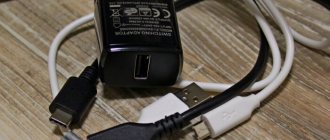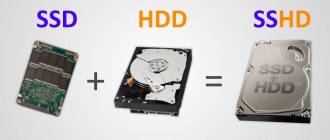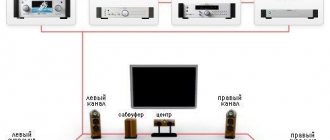When learning how to properly charge a laptop battery, first study the instructions. The manufacturer provides recommendations for working with the computer. If you do not follow them, the life of the battery (rechargeable battery) is reduced.
Tip: Do not completely discharge your laptop battery.
What kind of batteries are installed in laptops?
There are varieties:
- Nickel-cadmium (NiCad): characterized by heavy weight, limited service life (withstands up to 350 charge/discharge cycles). This reduces the cost of the battery. It is used at low and high temperatures. Due to its large size and limited service life, this type of battery is found only in older computer models.
- Nickel-metal hydride (NiMh): characterized by large sizes, but at the same time they can be used longer than the first of the considered options. This type of battery is considered one of the most environmentally friendly. It does not contain hazardous substances. However, today this type of battery is also rare due to its large size.
- Lithium-ion batteries (labeled Li-ion): used more often due to their light weight and compact dimensions. These parameters allow you to reduce the weight of the laptop. In addition, the Li-ion battery lasts longer than the considered analogues.
The only disadvantages include a ban on use in low temperature conditions. In this case, the operation of the battery is disrupted (capacity decreases). To maintain the functionality of the device, it must be turned on at temperatures above +5°C.
Appearance of a lithium-ion battery (labeled Li-ion).
- Lithium polymer (Li-pol): this is an improved version of the Li-ion battery, using polymer in its production. This material acts as an electrolyte. The main advantage is small dimensions. This type of battery is lightweight.
The standard model of such a battery cannot deliver high current, which reduces its scope of application: Li-pol devices are installed in compact equipment. There are also power batteries. They are characterized by their ability to deliver high current.
Is it possible to charge a laptop from a Power Bank?
The answer is yes, but it requires a more powerful device. Unfortunately, a regular external battery for charging phones and other low-power devices is not suitable for a laptop. The performance requirements for these battery options are high. They sometimes cost several times more than standard models, they are heavier and larger in size. Plus, such an external battery must be compatible with your laptop - it must fit specific parameters.
What device characteristics are required for this?
What parameters can a Power Bank have to charge a laptop?
Connectors for connecting to a laptop
Charging via a regular USB 2.0 or 3.0 cable will not work, as is the case with mobile devices. Sockets 2.0 or 3.0 provide a voltage of up to 4.5 volts - for a laptop this is too little for successful charging. The only USB option is the new 3.1 Type-C connector. It is designed for a power flow of 100 W. But even this will not guarantee successful charging if there is no special cable with the same standard.
The 3.1 Type-C cable even looks different from the classic USB 2.0 or 3.0 cable
If such a cable comes with an external battery, then there is nothing to worry about. But if it doesn’t exist, you’ll have to buy such a cord. And here it is important not to buy the first cheap one you come across for a couple of hundred rubles. It’s good if it charges, albeit slowly. But in the worst case, the laptop can burn out from such charging. Therefore, buy a high-quality, reliable cable model - it must be certified and meet the charging conditions for the laptop. If necessary, consult with specialists at a hardware store.
It is more efficient to use another, special round output for charging the laptop, which is available on a powerful external battery. This connector is designed to connect to the native charging port of the laptop. If the device has such an output, then it definitely has a laptop charging function. There are universal battery options, which come with different adapters so that you can connect almost any laptop model to the battery.
The Power Bank kit may include several adapters to connect the device to a laptop
Current and voltage
Standard Power Banks have an output voltage of only 5 volts. This is ideal for a phone, but negligible for a laptop. In the latter case, you need a “battery” with a voltage of 12 volts or more. Here you need to proceed from the specific parameters of your laptop. Take a look at its characteristics and you will already know exactly which Power Bank model to choose. Many Power Bank models, note, have switches for different voltages, for example, 16 and 19 volts.
As for the current strength: this parameter should also be higher - from 3A. Again, look at the characteristics of your laptop. If you buy a battery with a current less than what the laptop requires, at best it will charge slowly, and at worst it will not charge at all. In the first case, you will not be able to work on the PC while charging. For the Power Bank, this will be an overload - it will refuse to charge the laptop and turn off.
Battery capacity
Laptops have more power than phones, including batteries – they have more capacity. Typically this is from 10,000 mAh. You also need to buy a Power Bank with the appropriate volume so that it is enough for at least one charging cycle. It is important to consider: when transferring energy, part of the volume of the external “battery” is lost. That is, if you have a 20,000 mAh battery, it will not transfer the same 20,000 to the laptop, but, for example, only 14,000 mAh.
The larger the battery volume, the better. But again, don’t go for too much capacity. If you see that the price does not correspond to the capacity presented in the characteristics (the cost is much lower), it is better to avoid this model, as it may be a fake.
Versatility
If you want to use an external battery to charge not only a laptop, but also a phone and other mobile devices, buy a universal option with several outputs - for different devices.
One powerful battery can charge both a laptop and a phone at once
When choosing a “battery”, carefully read the characteristics - there should be a note about the charging function of the laptop, as well as through which cord and connector this charging occurs.
How to charge the battery correctly
Most laptops have Li-ion batteries. Charging is carried out in accordance with the characteristics of such batteries. After purchase, you should “overclock” the battery, for which several full charge/discharge cycles (2-3) are performed. First, you need to connect your computer to the network for the first time; it is advisable to do this when it is disconnected.
The charge level of a new battery when purchasing a laptop is average.
This is enough to maintain the properties of the battery during the storage of the device in a warehouse/store. You need to increase the charge percentage to 100%.
The duration of the first charging process varies from 4 to 8 hours. Some consumers leave a new laptop turned off overnight, but it must be connected to the network. When the battery is fully charged, the device is disconnected from the power source.
You must use the laptop in standalone mode. When the charge level drops to critical (15%), the device is connected to the network. The recharging time is the same – from 4 to 8 hours.
After this, you can use the laptop in normal mode. However, some consumers immediately begin working on the computer under normal conditions after purchase. The manufacturer does not provide recommendations in this regard. In the instructions for using a laptop you can often find information that the device must be connected to the network to charge. There are no more precise recommendations.
However, it is necessary to first “overclock” the battery, since such manufacturer loyalty may be due to market requirements. Thus, the range of device models is expanding, and the service life of equipment is shortening, which forces consumers to purchase new devices.
Under normal conditions, the battery charges for several hours (1.5-2). The duration of this period varies depending on the laptop model, up or down. You should be guided by the charge level indicator.
The process of charging a laptop battery.
Can I charge my laptop while in use?
Most modern laptops are safe to leave plugged in. In fact, most powerful gaming laptops perform best when they're connected to a network. Whenever you run an intensive application, such as a game, you can run it while your laptop is plugged in to reduce the number of battery cycles.
However, you should not leave your laptop in this state all the time, only when you are draining the battery very quickly.
So, unless you are moving or running an intensive application, it is recommended to leave the laptop connected during this time. If you do everyday tasks that don't use as much power, like browsing the Internet, you can rely on the battery alone.
How to save battery power
A charge level of 40-85% is considered acceptable. If you operate the laptop in this mode, it will help protect the battery from premature failure. It is not recommended to use the computer at its maximum capacity: the charge level should not drop below 10% of the total battery capacity. If this rule is not followed, the battery loses a certain percentage of its capacity, which shortens its service life.
It is recommended to control the temperature in the room. For a laptop and its battery, an acceptable temperature is within +15...+25°C. Some change up or down is allowed - +5...+45°С. However, it is not recommended to operate the device in such modes for a long time.
The lower the temperature, the faster the Li-ion battery loses a percentage of its capacity.
Working on a laptop at temperatures up to +45°C should be accompanied by its simultaneous cooling. For this, special stands with a fan are used.
You can also save battery power by reducing the load on it. So, the more the computer is loaded when working in offline mode, the faster the battery capacity decreases. As a result, the device needs to be charged more often. Under such conditions, the percentage of battery capacity gradually decreases.
If you plan to constantly work on your laptop, you should connect it to a network source. In this case, the need to constantly recharge the battery is reduced, which reduces the rate at which it loses capacity.
Other recommendations:
- An energy saving mode is set in the laptop settings; it can be configured to suit your requirements and preferences;
- during maximum computer load (watching videos, playing games and working in graphic editors), disable functions that are not yet used, such as Wi-Fi or Bluetooth;
- when the laptop is not in use, it is put into sleep or hibernation mode;
- disable unused programs that run in the background through startup; this option is removed using the task manager.
How to properly charge a laptop battery?
The correct way to charge the battery, as you may have guessed, is simply to connect it to the mains via a standard power adapter. In the Windows operating system, which most laptops run, it is possible to control the charge level of the battery. You can also set up a power-saving mode and a battery discharge limit at which the laptop will turn off. These settings can be made in “Control Panel” -> “Power Options”.
In the “Power Options” section you can make all the settings related to the functioning of the battery.
There is a battery icon in the system tray. By clicking on it, you can always see the laptop battery charge level and information about its operation (online or offline). As for the charge level, for lithium batteries it is better to maintain it in the range of 50-80%. This ensures the longest battery life. It is clear that it is impossible to constantly maintain such a charge level. But the rules outlined below are quite realistic to follow:
- Do not discharge the battery before turning off the laptop. If you see that the indicator in the operating system shows less than 50%, connect the laptop to the network;
- There is also no need to constantly keep the laptop with the battery connected to the network. If you often work at home using a power outlet, remove the battery and store it separately. Don't forget to charge it to about 50-60%;
- Periodically (every 3-4 months) calibrate your laptop battery. This is a full charge of the laptop battery and its subsequent discharge. This cycle is performed 2-3 times. If you don’t have time to perform this procedure manually, you can use programs that can be used to calibrate the laptop battery.
And one more piece of advice that doesn’t relate to charging, but is very important. Do not allow the battery to overheat. If you load your laptop with resource-intensive applications and it gets very hot, buy a cooling pad for it. Otherwise, the heat inside the case generated by the components will heat the battery. This is highly undesirable for lithium batteries.
Do I need to remove the battery from the laptop?
Modern battery models are designed in such a way that there is no need to dismantle them, because when the 100% charge level is reached, the current supply stops, which is due to the properties of the power controller. This means that it is not necessary to remove the battery.
There are a number of exceptions:
- you plan to work on a laptop for a long time when connected to a power source, and constant exposure to high voltage helps to reduce the battery capacity;
- the computer and battery become intensely heated;
- it is planned to turn off the laptop for a long time, while the charge level is deliberately reduced to 40-50%, after which the battery is removed.
It is not recommended to take a break from using such equipment for more than 5 months. When this rule is ignored, the aging process of the battery accelerates.
A safe way to remove the battery from a laptop.
How to properly charge a laptop battery without a charger
If the power supply has failed or you have to increase the charge level outside the home, when it is not possible to connect the device to a mains voltage source, consider available methods or special means for this purpose. When you need to travel frequently, it is recommended to immediately purchase an external battery.
Charging a laptop battery in a car
On the road, gadgets are used that connect to the cigarette lighter. This could be a car power adapter, auto-inverter. The first option is suitable for a limited number of laptop models.
An auto-inverter is a more suitable method. This device converts the car's voltage. It can be used to connect a power supply on the road. However, if you don't have a charger at hand, you can use a USB adapter. With its help, you connect directly to the autoinverter.
Solar battery
Charge the battery using a solar panel.
If you have to travel frequently, you should purchase a portable power source that can be used in any conditions, even if there is no possibility of connecting to mains voltage.
The solar battery is equipped with an adapter through which it is connected to the power connector of the laptop. Due to the conversion of solar energy into electric current, the battery is charged.
Moreover, the output voltage level must be at least 19 V. It is enough to connect the solar battery, having previously placed it in the sun. It must be remembered that in cloudy weather the device’s charge level also increases, although less intensely.
Charging from an external battery
This method does not require connection to a mains voltage source. The external battery must have a capacity that is several times greater than the capacity of the laptop battery. The device is connected via a USB adapter.
It is necessary to monitor the charge level of the external battery. If you take it with you without checking the battery capacity, you may find the device useless on the road. After several charge/discharge cycles, the external battery is connected to a power source.
How to properly store a laptop battery
If you need to store the battery separately from the laptop, be sure to charge it to at least 80%. Lithium-ion batteries lose some amount of energy slightly but constantly.
Leakage will accelerate significantly if the product is stored in a damp area; in addition, to ensure the safety of the battery, you should choose a heated area.
Overheating of the product during storage can also negatively affect the performance of the battery, so you should not store the battery near heating devices, under sunlight or on a windowsill. Frost has an even more negative effect on the performance of the power source.
If you put a dead battery into storage, then after some time it will go into a deep discharge and the controller will turn it off, after which it will not be possible to charge it without specialists.











